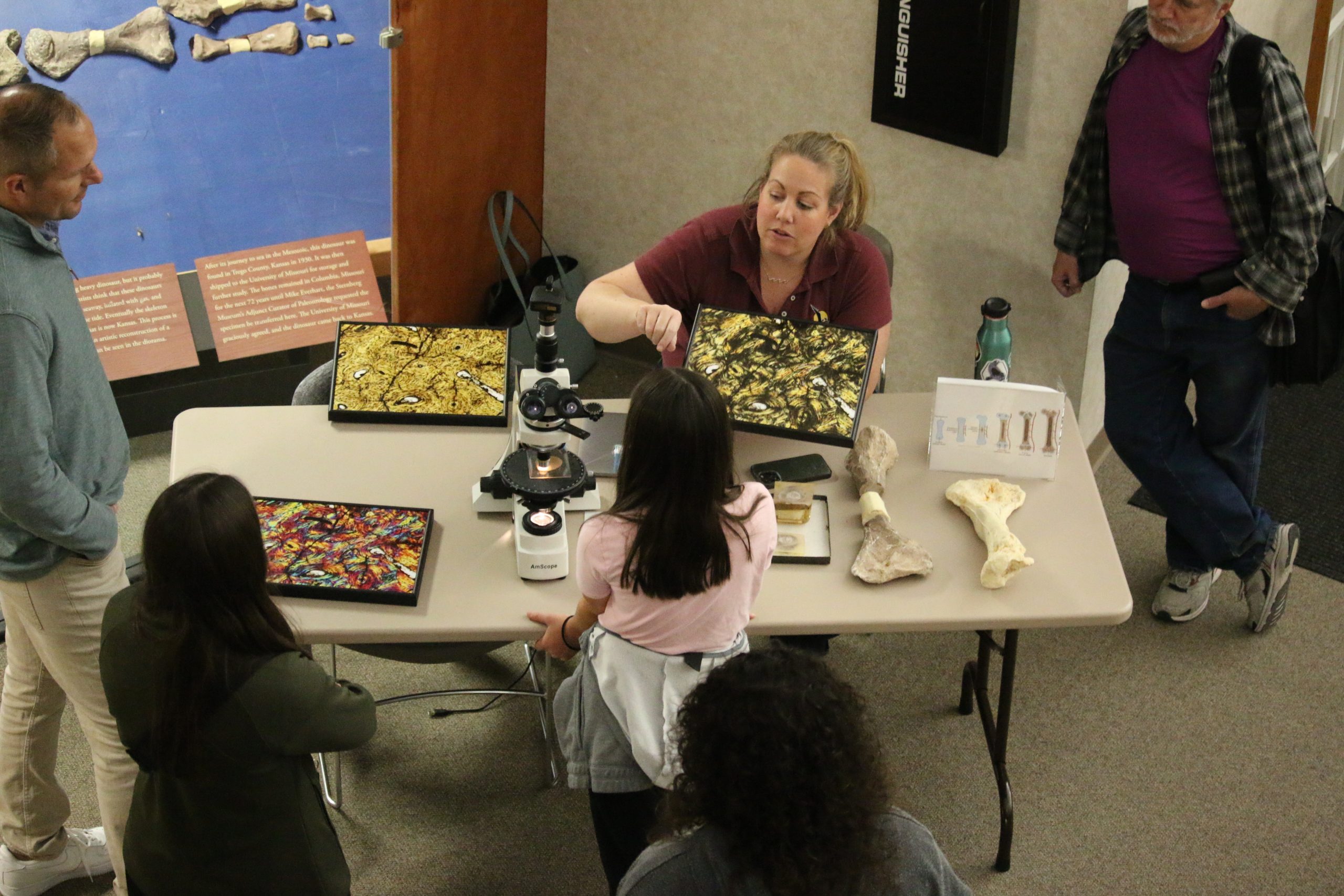Story by ALLIYAH BRUNICK Photos by MADDIE CARPENTER
Tiger Media Network
On Sunday, the Sternberg Museum of Natural History celebrated National Fossil Day by opening its doors and inviting the community to come look at fossils found in Kansas. National Fossil Day was started in 2010 by the National Park Service as a way to teach kids about the science and importance behind finding, studying, and preserving fossils.
Sternberg decided to wave their admission fee for the day and set up special exhibits to bring awareness to fossil resources and how they are used for education across the county and across the world.
This year’s theme at the Sternberg was “Dinosaurs of Kansas,” and there were displays, activities, and crafts to do all around the museum that fit the theme. Geosciences Chief Curator Laura Wilson had a display set up showcasing fossils of dinosaurs and how they are observed.
“My display focuses on a dinosaur fossil from Kansas,” Wilson said. “I cut open the bones and looked at them under a microscope to find out how they grew when they were alive, and I’ve been inviting our visitors to look at bone sections under a microscope and find out what we can learn from that.”
Wilson said they then replicate everything and then embed it in a plastic resin to stabilize it then glue it onto slides and make it thin so that the light shines through then they can see all of the cellular structure of the bone.
“This determines how fast they grew, warm-blooded or cold-blooded, how old they were when they died, what age they became adults, how old they were when they had babies and this is so much more information than we can find out just from looking at the outside of the bone, “ Wilson said.
There were many displays, one showcasing birds and explaining how different birds that are seen in Kansas, such as the Dark Eyed Junco and the Mississippi Kite – both of which are considered dinosaurs.
“I have a bunch of birds. Birds are modern dinosaurs and they evolved, so they are considered dinosaurs. We have some that are found here seasonally, and some found here year-round but, they are all found here in Kansas, “said Jenna Bures, a graduate student from Fort Hays who was involved in the Wilson Paleontology Research Group.
This event brings in many families, with an estimated 500 families coming on Sunday.
“We invite the community to come to the museum and explore, and learn and have fun family time too,” Wilson said.






















You must be logged in to post a comment.